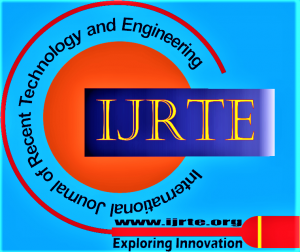Total Downloads: 44 , 2
Translational Calibration for Contact Type Three-Dimensional Position-Measuring Instruments
Hirofumi Maeda
Hirofumi Maeda, Department of Information Science and Technology, National Institute of Technology (KOSEN), Yuge College, Ehime Prefecture, Japan.
Manuscript received on 01 December 2022 | Revised Manuscript received on 07 December 2022 | Manuscript Accepted on 15 January 2023 | Manuscript published on 30 January 2023 | PP: 9-16 | Volume-11 Issue-5, January 2023 | Retrieval Number: 100.1/ijrte.E73840111523 | DOI: 10.35940/ijrte.E7384.0111523
Open Access | Editorial and Publishing Policies | Cite | Mendeley | Indexing and Abstracting
© The Authors. Blue Eyes Intelligence Engineering and Sciences Publication (BEIESP). This is an open access article under the CC-BY-NC-ND license (http://creativecommons.org/licenses/by-nc-nd/4.0/)
Abstract: In Japan, as the number of sewerage management facilities increases, continuous maintenance of drainage pipes and sewage pipes is considered necessary. However, it is grinding for operators to perform the expensive in-pipe inspection. Therefore, in recent years, inspections using stand-alone type piping inspection robots have become increasingly active. Inside the pipe, there are disturbances such as unevenness, sludge, or dents at pipe joints, which cause slips and tumbles of the robot. Therefore, conventional methods for addressing these disturbances involve adjusting the robot’s size and tires to match the diameter of the pipe, thereby preventing tipping over. We are exploring tip-over prevention measures by the software approach through advanced straight-ahead control. Currently, we are in the stage of verifying the self-position estimation necessary to realize straight-ahead control, and equipment for that purpose is required. However, to measure the position and posture of the robot within the curved pipe, a specialised three-dimensional position-measuring device is needed. Therefore, we have developed a three-dimensional position-measuring instrument for pipe inspection robots, but there is still an error in the absolute positioning accuracy. In this paper, to solve this error problem and make it precise, we propose a method to apply the calibration method used in the manipulator to the measuring instrument. Also, the kinematic model and its calibration parameters are explained, and a method of deleting unnecessary redundant parameters and parameter estimation by Newton’s method is presented. Furthermore, in a comparative verification using the measuring instrument proposed in the paper, the positional accuracy after calibration is within a range of approximately ±1.0 mm, and the variation is also within a range of ±0.5 mm, indicating that the proposed method is effective.
Keywords: Measuring Instrument, Calibration, Contact Type, Exploration Robot, Water Pipe
Scope of the Article: Robotics
